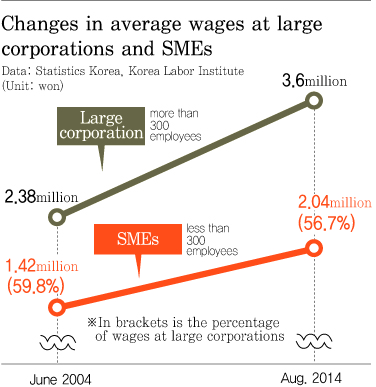 |
Changes in average wages at large corporations and SMEs
|
Tuesday, February 24, 2015
Wage gap for workers at large and small companies keeps getting bigger
Subscribe to:
Post Comments (Atom)
 |
Changes in average wages at large corporations and SMEs
|
No comments:
Post a Comment